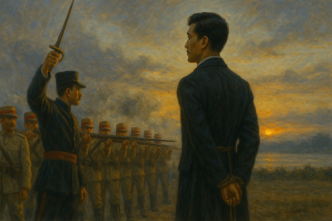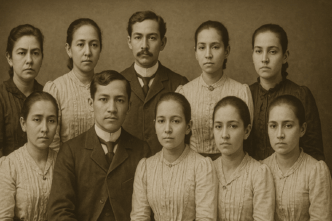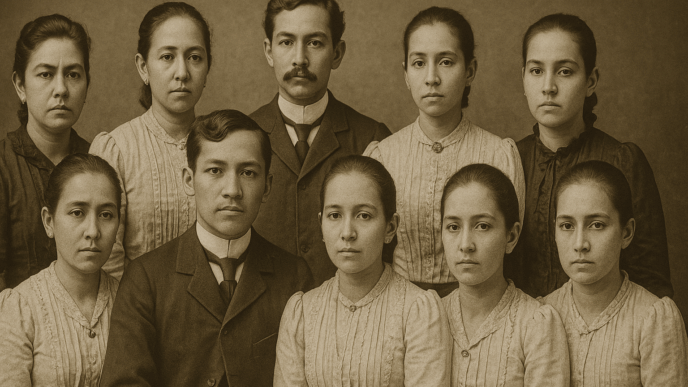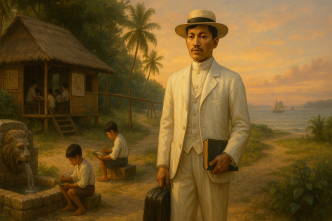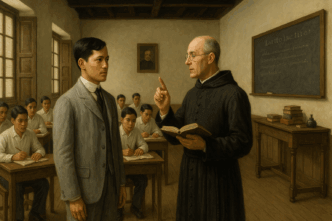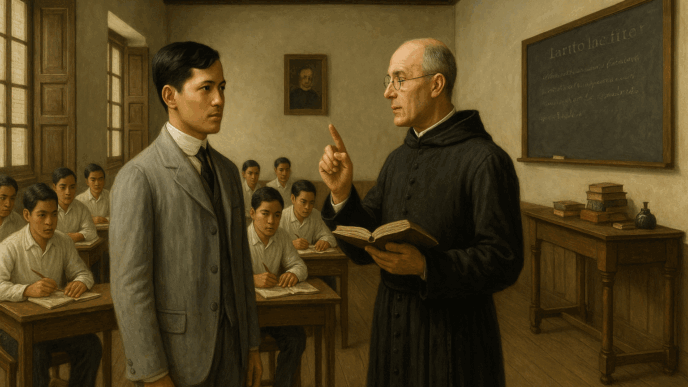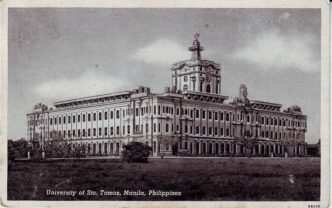Quick Summary
Jose Rizal was executed on December 30, 1896 at Bagumbayan (now Luneta) after being convicted of rebellion, sedition, and conspiracy. His death became the turning point that united Filipinos and strengthened the revolution.
Introduction
The death of Jose Rizal remains one of the most defining moments in Philippine history. Though he lived a life devoted to reform, education, and peaceful advocacy, he was executed as an enemy of the Spanish colonial state.
In the final days before his death, he endured interrogations, isolation, and enormous pressure to abandon his beliefs. Yet he remained calm, reflective, and unwavering in his conviction that love for country requires both courage and clarity.
His execution did not silence him. Instead, it ignited a nation and transformed him into the symbolic heart of the Philippine Revolution.
The Arrest and Return to the Philippines
Rizal was arrested in Barcelona on October 6, 1896, after being intercepted en route to Cuba, where he had volunteered as a doctor. Though Spain had initially approved his service, the outbreak of the Philippine Revolution prompted colonial authorities to see him as a threat. He was placed under heavy guard and shipped back to Manila aboard the transport ship Colón.
During the voyage, Rizal maintained a calm and dignified demeanor. He spoke politely with guards, wrote letters to his family, and expressed hope that justice would prevail. But outside the ship, the colonial government had already vilified him. His name appeared in accusations linking him to the Katipunan, even though he had repeatedly refused involvement in armed revolt.
When the Colón arrived in Manila on November 3, 1896, Rizal was taken directly to Fort Santiago under close surveillance, marking the beginning of his final captivity.
Imprisonment in Fort Santiago
Rizal’s cell in Fort Santiago was cold, dim, and closely monitored. Guards stood watch as he wrote letters, reflected on his life, and awaited the formal charges against him. Despite the harsh conditions, he remained mentally active. He read constantly, documented observations, and continued working on his poem that would later be known as Mi Último Adiós.
Family members were sometimes allowed to visit him, but only under strict conditions. He spoke with them calmly, reassuring them that whatever happened, he had acted out of conscience and duty. Even in confinement, he carried a quiet strength that inspired those who saw him.
The Charges Filed Against Him
The Spanish military court charged Rizal with three crimes:
- Rebellion
- Sedition
- Illegal association
Prosecutors argued that his novels Noli Me Tangere and El Filibusterismo had fueled anti-Spanish sentiment and inspired the Katipunan revolt. They also claimed that his correspondence and reformist activities in Europe were proof of subversion.
Rizal denied involvement in the revolution, clarifying that he disagreed with the timing and method of armed uprising. He insisted that genuine reform required education, reason, and gradual empowerment of the people. Yet the court had already decided. The trial was meant to legitimize a sentence already shaped by fear and politics.
The Trial: A Decision Already Made
Rizal’s trial began on December 26, 1896. It lasted only a few hours. The prosecution used unsigned documents, misinterpreted statements, and forced testimonies to argue his guilt. His defense lawyers—Luis Taviel de Andrade and others—did what they could, but the military tribunal was not seeking truth.
The verdict was predetermined: José Rizal was sentenced to death by firing squad.
When the judgment was read to him, Rizal remained composed. He asked only for time to write and to settle his affairs. His serenity in the face of injustice struck those around him as remarkable. His execution was scheduled for December 30.
The Last 24 Hours
Rizal’s last day was filled with a quiet mixture of reflection, final conversations, and acts of deep kindness.
Writing Through the Night
On the evening of December 29, Rizal wrote farewell letters to his family, close friends, and supporters. He asked forgiveness for any pain he had caused and urged his siblings to remain united.
During the night, he completed Mi Último Adiós, hiding the handwritten poem inside an alcohol stove so that his family could retrieve it later. The poem was a final gift of clarity and hope, filled with love for the Philippines and unwavering belief in its future.
Final Visit from His Family
At dawn on December 29 and again in the morning of December 30, his family was allowed to see him. The moment was emotional but dignified. His mother, Teodora, walked with difficulty yet insisted on embracing her son. Rizal held her hands, telling her he was ready. He reminded his siblings to take care of one another and to accept his fate without bitterness.
The Farewell to Josephine Bracken
Josephine Bracken was brought into the fort for a final meeting. Their parting was quiet but filled with unspoken grief. According to accounts, Rizal and Josephine exchanged vows in the presence of a priest shortly before his execution, though accounts differ on the formality of the ceremony. Josephine held his hands for the last time, carrying with her the weight of a future that would never come.
Receiving His Last Communion
Rizal reflected on his faith and was offered the sacraments. Some accounts describe him engaging in deep conversation with priests and reaffirming his belief in God while rejecting political manipulation disguised as religion. He approached his final hours with peace, ready to face death with dignity.
The Final Walk to Bagumbayan
Shortly after 6 a.m. on December 30, the gates of Fort Santiago opened. Rizal, wearing a black suit, walked calmly toward Bagumbayan Field under heavy guard. Soldiers surrounded him on all sides. Along the route, he saw familiar places of historic Manila— the moat, the walls, the open fields.
Spectators gathered behind barricades. Some wept quietly. Others stood in reverent silence. To many Filipinos, he had already become a hero long before the shots were fired.
Rizal walked steadily, his hands tied but his posture upright. He asked to face the firing squad, wishing to look his executioners directly in the eyes. His request was denied. He was forced to turn his back, but in one final act of defiance, he twisted his body during the final moment so that he fell facing the rising sun.
The Execution
At around 7:03 a.m., the signal was given. Seven Filipino soldiers, under the command of Spanish officers, raised their rifles. A final command echoed across Bagumbayan.
Rizal fell to the ground, with his final movement turning him toward the east — symbolically, toward the future of the nation.
His lifeless body lay on the earth, but his death reverberated immediately throughout the Philippines. News of the execution spread rapidly. What was intended to silence him instead amplified his voice.
Aftermath: The Making of a National Hero
Spanish authorities hoped José Rizal’s death would suppress rebellion. Instead, it unified the Filipino people. Revolutionaries were emboldened, moderates were radicalized, and even those who had doubts about independence reconsidered their views.
Rizal’s writings gained new urgency. His novels, letters, and essays circulated even more widely as Filipinos connected his sacrifice to their own struggles. The revolution gained momentum, eventually leading to widespread uprisings across Luzon and other islands.
Bagumbayan Field, once a place of execution, became sacred ground. It is now Rizal Park, where his monument stands as a lasting symbol of national identity, courage, and love for country.
Why Rizal’s Death Matters Today
Rizal’s execution marked not only the end of a life but the birth of an idea: that a nation is shaped by its conscience as much as by its struggles. His death solidified a legacy built not on violence, but on truth and integrity. Filipinos today remember him not simply as a martyr, but as a thinker who understood that freedom is anchored in education, principle, and shared purpose.
He died for a country still imagining itself — but his sacrifice helped bring that imagined nation into being.
Conclusion
José Rizal’s death remains one of the most powerful episodes in Philippine history. Through the final hours of his life, he showed courage without anger, conviction without hatred, and patriotism without violence. His execution ignited the revolution and shaped the nation that would eventually rise from colonial rule.
More than a century later, his final walk at Bagumbayan continues to echo as a reminder of what it means to love the Philippines with both strength and compassion.
To read Rizal’s full life story, see Jose Rizal: A Complete Biography.
